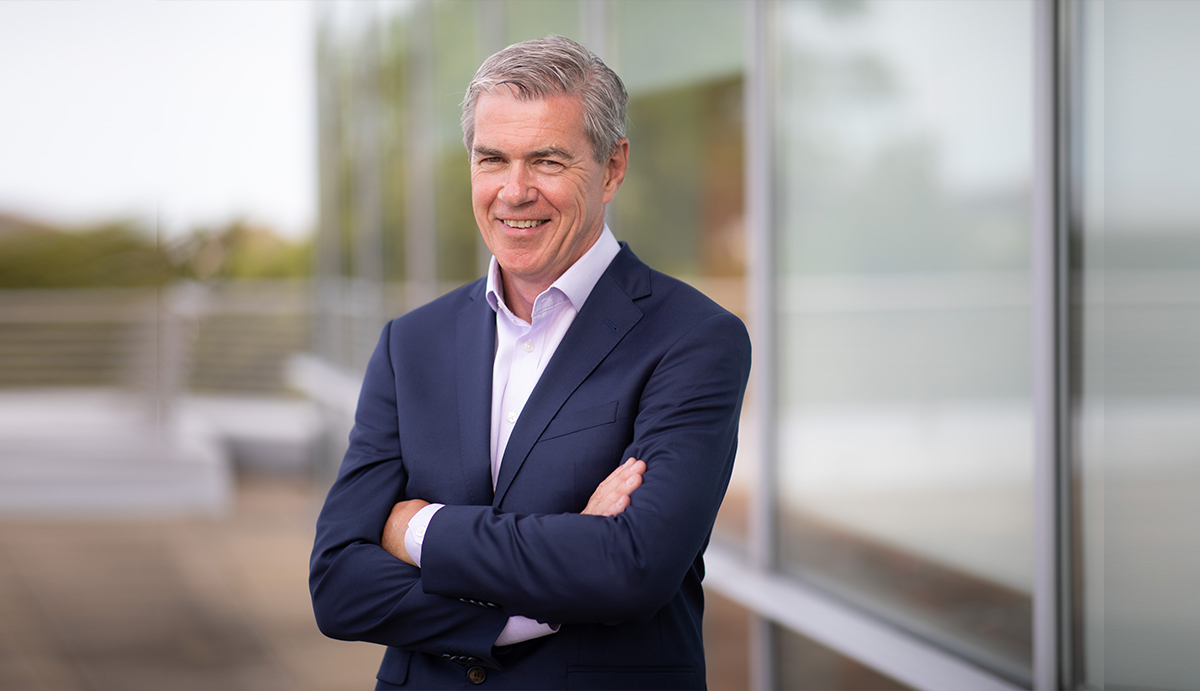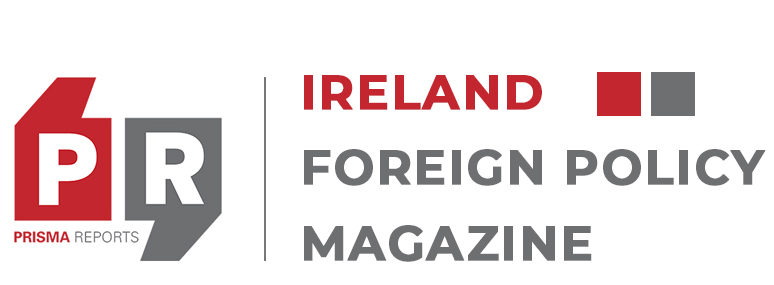
19 Sep Transition to green power means opportunity
Mark Foley, CEO, EirGrid, talks about the strengths of Ireland’s transformative power generation sector and opportunities that will be created as the country switches to more renewables in the energy mix
How has Eigrid’s focus changed since it was established?
Electricity is effectively about 100 years old as a utility proposition. It was rolled out in the early ’20s. It took decades to get electricity to every home in Ireland. We are a rural country; we have a high concentration of populations in cities, but around 50% of the population lives outside urban areas. Electricity has become an agent for change, both in the economy and our society. We started with a mission to ensure that every home and business had reliable electricity. Our ambitions have grown. Our current mission is to make sure the power system of the future continues to be as resilient and robust as it is today in 10 or 30 years.
Economic growth continues at a pace that demands more electricity. We need to enhance the capacity of the grid. Unlike most countries in Europe, we are seeing a strong growth in demand for electricity. The government announced that our economic growth forecast for 2022 is 6.7%. The data center phenomenon in Ireland has seen consistent double-digit growth in its demand for electricity. We must strengthen our grid to accommodate this rise.
We also need to strengthen the amount of interconnectivity we have with the European Union. We have two interconnectors with the United Kingdom, but they are no longer part of the European Union. We will maintain our relationship, but we want to urgently connect back into the EU. We are building a new 348-mile interconnector between Ireland and France called the Celtic Interconnector that will be finalized in four to five years. Interconnection is important because we can bring electricity from France when we do not have enough and export our new renewable power generation. There is also a private company called Greenlink building another interconnector between Ireland and the United Kingdom.
How is Ireland dealing with its transition from traditional energy sources to renewables?
Electricity needs to be green and no longer reliant on fossil fuel plants. We are stripping carbon out of our lives by changing our economy to become carbon neutral. We have a huge responsibility to facilitate and enable that transition. The European Union provided a base that ensured our power mix was made up of 40% renewables by 2020. They put in place policy regulations and incentive mechanisms for the public and private sectors to deliver power generation through onshore wind. The renewables sector was low in 2007, but by the end of 2020 43% of our energy came from renewables. It is a staggering achievement.
We now have approximately 4.5 GW of onshore wind power generation. The new industry was developed and delivered in the form of hundreds of high-tech wind farms across the island. Meeting the world’s leading technological breakthroughs and operating a power system with high levels of renewables has been a significant technical challenge. Power generation systems need to stay stable when wind farms switch off at any moment. At the end of 2020 we had the ability to handle renewables on the system up to 65%. To achieve around 40% of our capacity coming from renewables over the year means operating at a higher level when the wind is strongly blowing. We are an island with limited interconnectivity; our level of technical achievement has not been achieved anywhere else in the world.
We might be a small nation and our carbon dioxide emissions may be insignificant on the global scene, but we are proud Europeans. We believe we should pull our weight. We are beneficiaries of European support and foreign direct investment. The government aims to have a power system supported by 70% renewables by 2030. We must go from 43% to 70% between now and the end of the decade. The public sector is lending support through legislation. Much of the new energy mix will be in offshore wind, particularly on the east coast. We will also be using solar technology. An additional 10 GW of new renewables will be required.
Our cap for instantaneous renewable power generation at the end of December 2020 was 65%. We have recently raised the ceiling to 70% and will trail 75% by 2030. In the next five to seven years, the system will have the technical capacity to run nearly 100% on renewables and still provide the reliability we currently enjoy today. We need to work with regulators to ensure that the market evolves, and investors are encouraged to invest in renewables, batteries and technologies that keep the system stable.
What kind of global partnerships is Ireland working with in implementing its energy transition strategy?
There is an extraordinary pan-global collaboration going on. Large companies are now talking about their ambitions to grow an entirely green electricity system. We are working on partnerships to share intellectual property, approaches and new technologies. For example, we are working with California, Texas, Holland, Germany and Australia on a collaborative, open-source intellectual property sharing platform based around future power systems and moving towards net zero carbon emissions. In the last three years there has been a massive shift in the global public sector’s sentiment and focus in this area.
What kind of new technologies is Eirgrid implementing to bolster Ireland’s power generation sector?
A good example is the battery. Three years ago, there were no batteries in the power system. Today there are big battery installations that are plugged into the power system with a simple but important function. On a day when there is a massive amount of wind flowing and the power system operates on 70% renewables, there is always the risk that a plant might go down and the system might suddenly become unstable. Batteries ensure that if this happens the system remains stable. Another area that has changed is wires. There is emerging technology where you can put devices on wires to help with how electricity is flowing and in what direction. These optimize electricity flow and keep voltages stable.
There are also new technologies being implemented in the control room where everything is managed. Emerging technologies and software allows control room operators to see and operate the whole system with better information from their desk. For example, a sophisticated tool allows us to forecast the weather; we now know if the wind is going to drop off or pick up and what solar intensity we will have on a certain day. Control rooms in 2030 will be able to measure and influence every instrument in our power plants around the entire country.
What systems is Eirgrid putting in place to meet the growing energy demand from data centers and similar industries?
We have targeted mechanisms to encourage industrial users to be active in balancing the energy system. We have demand side products and services where we ask customers to switch off electricity during hours of peak demand. In the next decade we will see more intelligence brought to bear in factories and homes. Beyond 2030, everyone could be an active player in the power system through rewards or using intelligent technology to schedule their consumption of electricity. For example, people could have intelligent devices that only charge electric cars at night.
Why has Ireland been so successful at attracting foreign direct investment?
Ireland has put in place policies that create an open economy with the capacity to play on the European and world stage. This foundation has encouraged international investment and capital into the country. Ireland is now a bridge to the European Union. We speak English, have an educated workforce and a very progressive industrial ecosystem. We have used tax as a tool to encourage industry. We have had a stable political environment for decades and seen extraordinary performance in attracting foreign direct investment across all the sectors, whether it be in pharmaceuticals, information and communication technologies or data centers.
All big corporations and innovation companies from around the globe have chosen to locate some aspects of their international operations in Ireland for production, research, sales and marketing. Consistency of our policy has been the bedrock for industrial growth. Companies who came here were successful and that bred success. Companies have grown roots that have deepened over decades. They have grown supply chains, factories and intellectual property.
How did Brexit affect Ireland’s power generation sector?
The impact was not as severe as it could have been. A hard Brexit would have created a situation where our interconnectors to the EU were switched off. The United Kingdom is not trading on the pan-European, day-ahead market, but we have an interim arrangement with them where the interconnectors continue to work, perhaps less efficiently. Our arrangement allows us to trade with the U.K. on what is called the intraday trading platform. Fortunately, the interim trading arrangement ensures that most of our needs are met.
There is a program of work under the exit agreement that is trying to formulate a long-term trading mechanism between European countries and the United Kingdom. We are participating in ongoing studies being done to establish the best long-term mechanism for the EU and the U.K. to trade electricity. Meanwhile we will be building an interconnector to France, which will add capacity and stability and create a more predictable trading platform. We have not yet reached the point where we all want to be; there is still a bit of a journey, but at least it was not a complete crisis.
How significant is the relationship between Ireland and the U.S.?
Ireland is very important to the American companies that enter the market. The first point of call for incoming companies is the Industrial Development Authority who work on behalf of the government to attract industry. The next office they call is ours for the supply of power. What is normally not talked about is the amount of investment by Irish companies into America. The number of Irish entrepreneurs setting up businesses in America is significant. There are two-way flows of investment and entrepreneurial activities. We have a significant influence on the North American economy. There seems to be a movement towards a global agreement in taxation. It is in everyone’s interest to remove the uncertainty around this matter. This is not specifically an Irish issue, but a European and American issue.
How will the company and Ireland’s power generation sector change over the next decade?
Eirgrid will change significantly in the next ten years for two reasons. The first will come through radically transitioning the power system to have net-zero carbon emissions. It will be technologically unrecognizable from today. The second will come by virtue of government policy in the planning of an offshore wind industry. Ireland’s coastal area of control is ten times our landmass. There is extraordinary potential to build an offshore wind industry and export power into Europe and supply green power for data centers. We have been given the obligation to oversee the development and integration of the entire offshore wind industry. Wind to Ireland is like oil to Saudi Arabia; we must exploit this resource on the behalf of the country.

No Comments